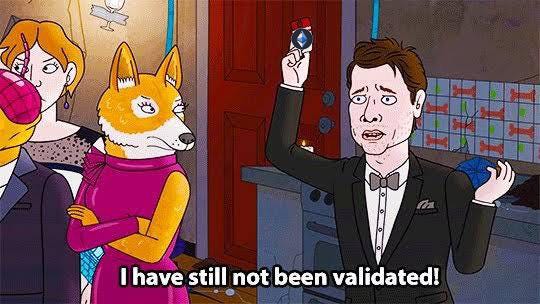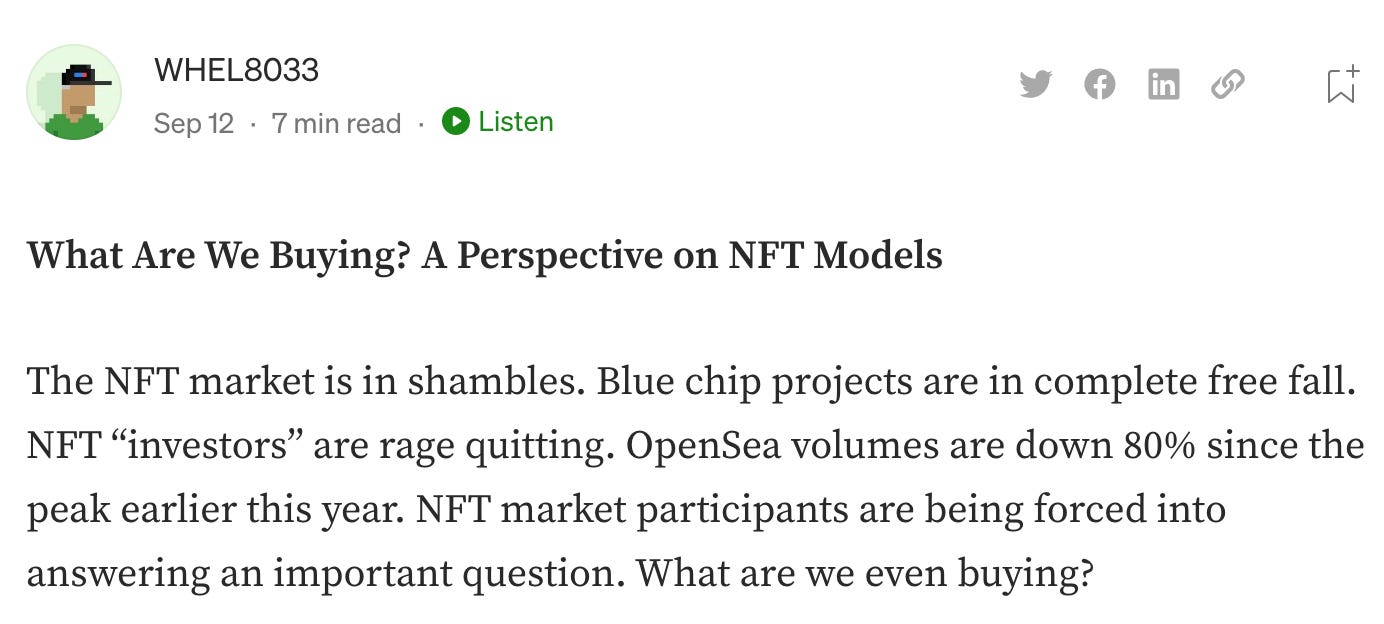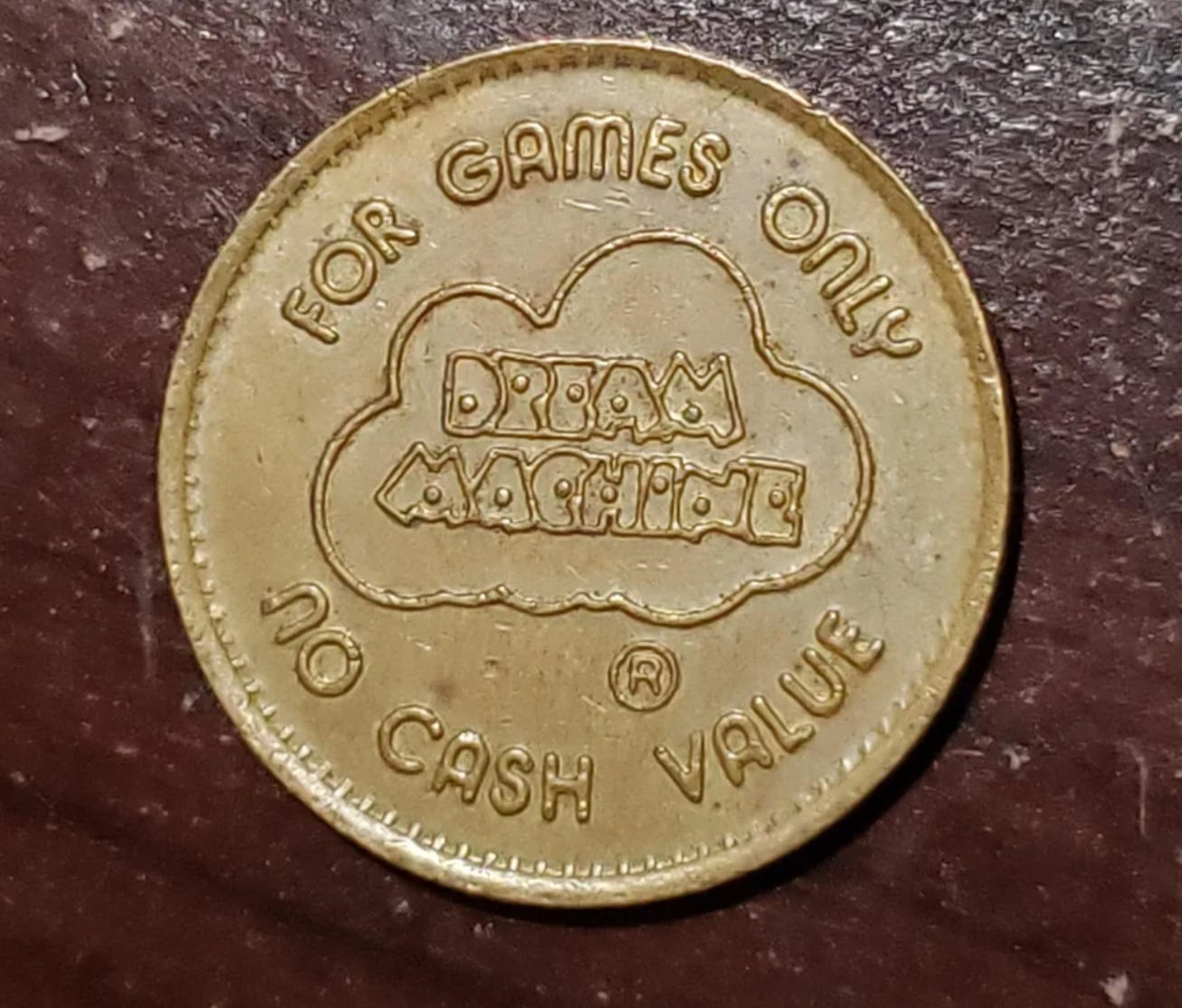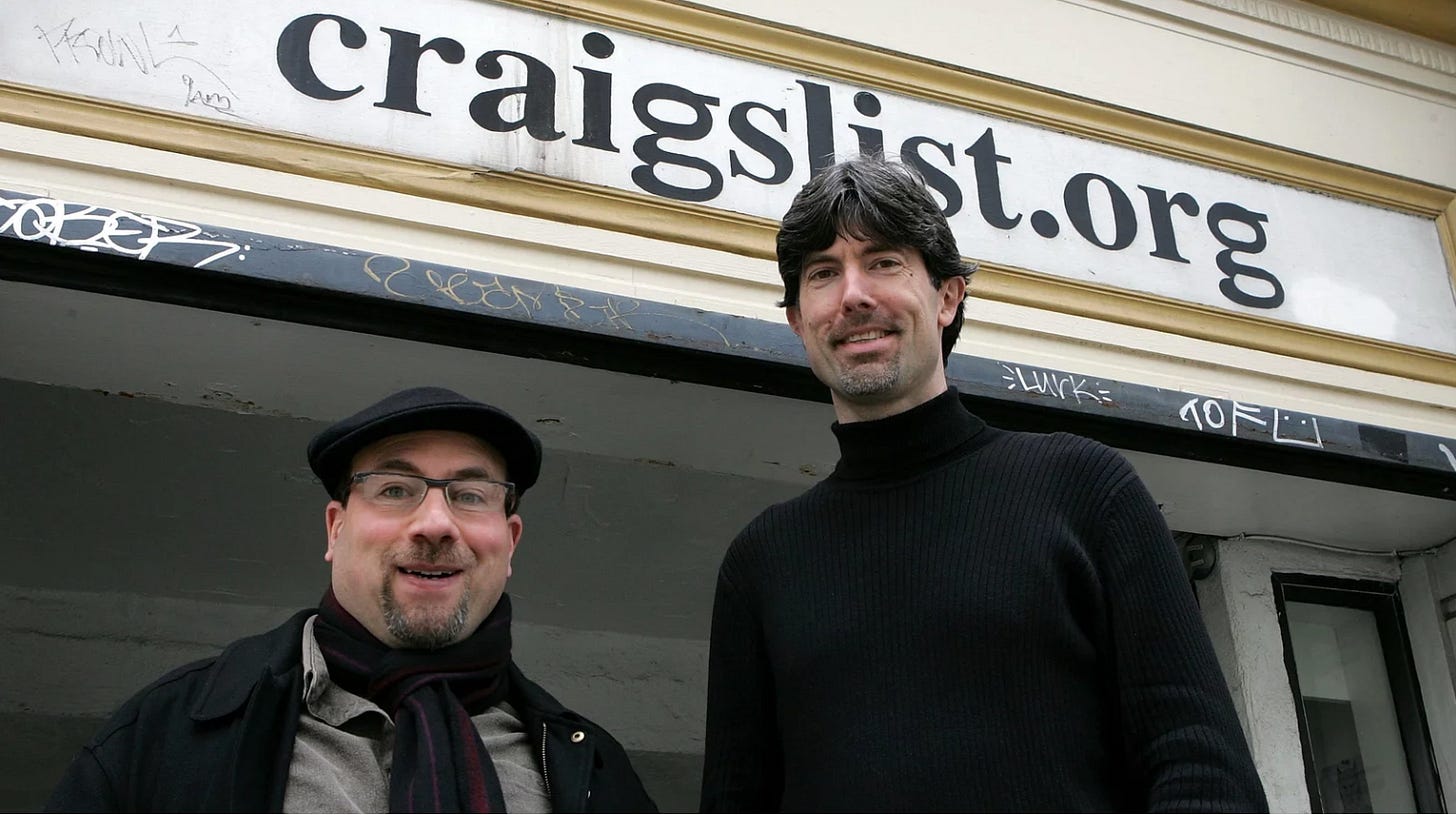Token Stakes 💰🎲
What do you own when you purchase an NFT?
Instead of a long, wordy explanation about what happened when 46,000+ “community backers” helped fund Zach Braff’s movie Wish I Was Here in 2013, here it is condensed, in our best attempt at a classic BoJack tongue twister.
⌐◨-◨
We all got daft with Zach Braff. Gave him cash to hire a staff and get to the top of his craft. Turns out that was only half the cash. Braff took gap, sold fast, for half cash, but did his staff throw backers a life raft? Ha! No, they laughed, said the whole thing was a gaffe and Braff didn’t have to pay anyone back because Kickstarter doesn’t work like that. In the end, I never even got a poster with that promised autograph, turns out the whole thing was well orchestrated, or completely unintentional, graft.
⌐◨-◨
Never saw the movie out of spite and have to think others did the same, as the film grossed somewhere between $6-7 million in total revenues and reportedly cost upwards of $6 million to make. Comparatively, Braff’s first movie, Garden State grossed over $36MM.
The above data points to the potential conclusion that someone who builds an audience, and has community ready to financially support their projects, should probably take servicing that community somewhat seriously. Maybe Wish I Was Here was a a really bad movie. Or, perhaps, those 46,000+ people that felt they got rugged by Braff, justified or not, and were not rushing to see the movie post Kickstarter fallout.
For the curious, here is a story that sums up the 2014 entire saga.
⌐◨-◨
Thankfully, we are past all that right? It is 2022 and we have NFTs stuffed with smart contracts to make sure incentives are aligned for all parties, right?
Um no. What do you expect from an industry that spent the last 20+ years calling people that engaged, contributed, and gave attention to their services a bunch of “users”.
Thing is, we now have all the tools to start attempting to solve this problem.
⌐◨-◨
🔐 What Are NFT Buyers?
Are we consumers? Collectors? Investors? Holders?
Let’s take them one by one.
Consumers
We are consumers, sure, but when we purchase an NFT the implicit agreement is that we are more than just consumers, maybe that is a terrible assumption to make, however, it is made by both sides. Projects want you to participate in the community, engage, network, champion the project on social media, perhaps build something, and, maybe even vote on proposals or future directions of how the project spends its treasury cash.
In most cases, both project creators and project buyers would agree those that own an NFT are more than just consumers — this isn’t like buying a refrigerator.
Collectors
Ah, collectors. Many NFT buyers consider themselves collectoors. Some say it harkens back to when they use to collect Beanie Babies or baseball cards, while others, consider themselves more sophisticated art collectors blazing the path for a new digital art renaissance that will someday be recognized by the entire world. If you own an XCOPY, a Beeple, or certain generative art tokens, you are definitely a collector.
The great thing about collector NFTs is, for the most part, is there is very little ambiguity here. Digital artists creates art, collectors buy it — transaction over. 🤝
Investors
Traditionally, private investors needed to be accredited investors, and whether they were investing in priced equity in private companies, real estate, or other financial deals, written contracts were involved.
Each industry has a starter template that has evolved over time. For instance, in 2013 Paul Graham authored a SAFE document to replace the traditional Convertible Note Agreement. The SAFE catered to tech startups that were raising seed funding to find product market fit before they went to professional VCs to complete a more traditional round.
Nothing is different in NFT land. When A16Z or other professional investors fund projects in this space they fund the company that creates the NFTs.
Digital asset projects have started to reshape these contracts to assuage investors. The SAFT, basically a SAFE with some revisions, is a good example of this. Investors actually love SAFTs even more than SAFE agreements because tokens are much easier to sell on secondary markets than shares of a startup that hasn’t found product market fit.
However, NFT holders almost always sit below investors in the financial waterfall, which means financial incentives can quickly get misaligned.
Holders
Ok so if NFT holders aren’t investors, what are they? They are stakeholders, which is a vague term that doesn’t really mean much more than being a Braff backer at the moment. Stakeholders don’t currently get traditional shareholder rights, they don’t get a promise of future equity in the project entity, nor do they get any sort of financial transparency guarantee. So they are currently bag holders.
It doesn’t have to be this way, and it shouldn’t be. Digital asset projects that are obviously more than just art or collectibles can and should consider taking the time to align incentives between the project builders, investors, and the community holders. Some projects are starting to do just that, albeit slowly.
How? The tools are available.
*Accredited investors can be KYC’d and offered equity for their community holdings.
*Non accredited investors can be offered equity for their community holdings via Reg CF (up to $5 million)
*Smart contracts can be programmed to follow the rules project builders have set up and a distributed ledger can keep track of everything so all constituents can have access to all information.
Oh, and really, should any NFT project be raising more than $5MM from a mint? $5MM is 10x more than yCombinator companies get, and probably 100x more than most bootstrapped companies start with?
$5MM fells like more than enough to try and find protocol market fit.
With so few projects taking the time to align constituent incentives prior to launching, it shouldn’t surprise anyone that speculation has taken over the game. It is the only way those on the lowest end of the financial waterfall can attempt to control the outcome of their investment and achieve an ROI. Most stakeholders currently don’t have the luxury of waiting around to see if the project builders and their investors throw them some scraps.
It feels like in the future, the most successful NFT projects will be the ones that take the time to align incentives between project builders, investors, and community stakeholders. In certain projects, you can already see that starting to happen.
Looking forward to the coming stakeholders rights wave!
💸 Getting Rugged Since 1610
Over four hundred years ago angry Dutch East India Company pushed for more rights and accused directors of self dealing. This led to what eventually became modern corporate structure.
Years later, economy god Adam Smith said:
The directors of such [joint-stock] companies, however, being the managers rather of other people's money than of their own, it cannot well be expected, that they should watch over it with the same anxious vigilance with which the partners in a private copartnery frequently watch over their own.... Negligence and profusion, therefore, must always prevail, more or less, in the management of the affairs of such a company.
Non of this stopped Sir Isaac Newton, Mark Twain, Winston Churchill, Kevin Bacon & Kyria Sedgwick, or Mark Cuban from getting rugged in their day.
⏲ Back in the 90s…
Craig Newmark developed craigslist out of his condo in San Franciscos Cole Valley 1995. He tried to convince his employer, Charles Schwab, that the Internet was going to be a thing, instead they laid him off (RIF’d him in 2022 speak), and he used his severance money to develop his simple events newsletter into a website. He never imagined it would grow up to take out publishings classifieds cash cow, but that is exactly what happened over the next 20+ years. While craigslist is definitely a for profit corporation, revenues topped $1 billion in 2017 and were still a healthy $600 million+ last year, Craig (42% owner), and his partner Jim (29%) hold the lion’s share of the company (according to “the Internet”).
In 2004 Ebay tried what sounds like some forerunner of a vampire attack, some sort of hostile takeover, or maybe just a way to mess with a competitor, when they purchased ~28% of craiglist from a former employee.
Over the past decade, Craig himself, and his company have funneled that money back into public goods and supporting political causes.
Basically, as Craig has said, craigslist has just tried to be a good Internet citizen.
Hmm, craigslist is Lindy, monetized early then never really changed course or innovated, has network effects, is THE brand of classified ads nearly 30 years later, and appears to have used most of its funds to try and support public goods that are important to Craig, like journalism and certain species of birds (c’mon, you can’t be surprised).
While in this case there appear to be two people making all the decisions, instead of a group of NFT owners, you have to wonder if there are some Web3 analogs in here, specifically for a project like Nouns DAO.
🎵 Music To Set The Mood
🎵 Hook me up a new revolution
Cause this one is a lie
We sat around laughin' and watched the last one die…🎵
Send us your GMs won’t ya?






